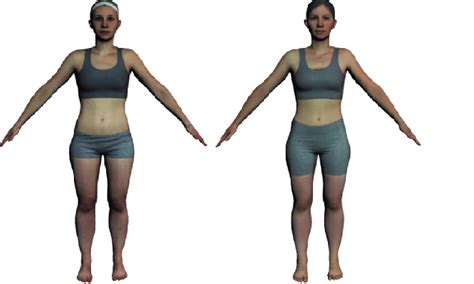Sherly
You need 3 min read
Post on Feb 03, 2025
Table of Contents

Body Visualizer: A Revolutionary Tool for Understanding Your Anatomy
Are you fascinated by the human body? Do you need a tool to help visualize complex anatomical structures for study, medical training, or artistic purposes? Then a body visualizer is exactly what you need. This comprehensive guide explores the capabilities and applications of this innovative technology.
What is a Body Visualizer?
A body visualizer is a software application or online tool that allows users to interactively explore three-dimensional models of the human body. These models range from simple representations to highly detailed anatomical structures, showcasing everything from bones and muscles to organs and circulatory systems. Unlike static images, body visualizers provide a dynamic experience, enabling users to rotate, zoom, and dissect virtual bodies to gain a deeper understanding of their intricacies.
Key Features of Advanced Body Visualizers:
- High-Resolution 3D Models: Experience incredibly detailed anatomical models, often based on real-world scans and medical imaging data.
- Interactive Exploration: Rotate, zoom, and pan around the model with ease, gaining a comprehensive view from any angle.
- Layer-by-Layer Dissection: Peel back layers of the body to reveal underlying structures, making complex anatomical relationships easy to understand.
- Multiple System Views: Explore individual systems (skeletal, muscular, nervous, etc.) or view them in combination for a holistic understanding.
- Search Functionality: Quickly locate specific bones, muscles, organs, or other anatomical features using a powerful search function.
- Quizzes and Assessments: Some body visualizers include quizzes and assessments to reinforce learning and test your knowledge.
- Augmented Reality (AR) Capabilities: Some advanced versions incorporate AR, enabling users to overlay 3D anatomical models onto real-world views.
Who Can Benefit from Using a Body Visualizer?
The applications of body visualizers are incredibly diverse:
- Medical Students and Professionals: These tools are invaluable for medical students learning anatomy and physiology, as well as for practicing physicians reviewing complex cases or planning procedures. They offer a safe and interactive way to learn.
- Fitness Enthusiasts: Understanding the human musculoskeletal system can enhance workout routines and prevent injuries. A body visualizer can help visualize muscle groups and their functions.
- Artists and Animators: Creating realistic anatomical representations for art or animation requires accurate knowledge. Body visualizers provide a valuable reference point.
- Educators: These tools provide engaging and interactive learning experiences for students of all ages, making complex anatomical concepts easier to grasp.
- Patients: Understanding their own anatomy can help patients better understand their medical conditions and treatment plans.
Choosing the Right Body Visualizer: Factors to Consider
When selecting a body visualizer, consider the following:
- Level of Detail: Choose a visualizer with the level of detail appropriate for your needs. Students might benefit from simpler models, while medical professionals might require highly detailed ones.
- Features and Functionality: Consider the features offered, such as interactive dissection, multiple system views, search functionality, and AR capabilities.
- User Interface: Ensure the software is user-friendly and intuitive, with a clean and easy-to-navigate interface.
- Platform Compatibility: Check the compatibility of the software with your operating system and devices.
- Cost: Body visualizers vary in price, so consider your budget when making your selection.
Beyond the Software: Enhancing Your Learning with Body Visualization
While software is crucial, maximizing your understanding requires more than just using the tool. Consider these additional tips:
- Combine with Traditional Study Methods: Use the visualizer in conjunction with textbooks, lectures, and other learning materials for a more holistic approach.
- Engage in Active Learning: Don't just passively observe the models. Actively dissect, rotate, and zoom to deepen your understanding.
- Form Study Groups: Discuss your findings with peers and share insights gained from using the body visualizer.
In conclusion, body visualizers are powerful tools that revolutionize the way we understand and interact with the human body. Whether you're a medical student, fitness enthusiast, artist, or educator, a body visualizer can enhance your learning, creativity, and overall understanding of human anatomy. Choosing the right tool depends on your individual needs and goals, but the benefits are undeniable.
Thanks for visiting this site! We hope you enjoyed this article.
